Gentle Movements to Improve Your Gut Health

If you have dealt with digestive issues, you know they are incredibly challenging and can affect everything you do in your daily life. Simply trying to move around and get things done is difficult when you have gut pain and discomfort, along with all the other attendant symptoms such as bloating and frequent bathroom breaks.
It’s no wonder that there is a big market for medications and supplements for gut issues, as well as particular dietary protocols. Unfortunately, this leads to lots of confusion and money spent on expensive and ineffective solutions.
In this article, I hope to provide useful information that will help regardless of your specific issues because these are fundamental movement strategies for dealing with digestive concerns.
Types of digestive disorders
You’ve likely heard of terms such as irritable bowel syndrome, “leaky gut” and celiac disease—to name a few. They all can be very complicated, and I don’t intend for this article to be any kind of diagnostic advice that can tell you what’s going on with you in particular. Please consult your health-care provider for that! But we can categorize these various concerns in a way that can help you recognize what may be related to your issues and help to guide you and your health-care professional to the best course of action.
To simplify things, there are three main causes for digestive problems:
- autoimmune (inflammatory) issues
- food intolerances
- infectious diseases (viral, bacterial, parasitical)
These are definitely big and broad categories, and there is overlap between them, but thinking of it in these ways can be helpful.
For infectious diseases, these are relatively out of your control and absolutely require seeing a health-care provider. Autoimmune problems (Crohn’s disease, ulcerative colitis) also should be supervised by a physician, but the general strategies we’ll discuss here can be helpful. Food intolerances can fall into the realm of autoimmune disorders, such as celiac disease, which is an autoimmune reaction to gluten, but they can involve less intense and lingering symptoms. Breaking these two apart assists in analyzing how you can deal with these problems.
Movement strategies
Movement in general is not just good for your muscles and cardiovascular system but also is good for your gut! Physical activity not only improves circulation but the mechanical stimulation of your digestive system is also very important. Peristalsis refers to the involuntary muscle contractions that moves material (food/waste) along your digestive tract, and this should happen regardless of whether you are moving. But being active with all the bends and twists that entails also helps to “move things along.”
Activities that are rhythmic and prolonged such as walking, jogging and biking can be very helpful. It’s no wonder that people throughout every culture have traditions of walking after meals. There’s no need for the workout to be very intense—a nice stroll for 10 to 20 minutes works very well.
There are also some helpful specific abdominal exercises to try, and they work on the same principle as the repetitive mechanical “massage” of walking but are more focused and efficient in creating the desired effects, requiring just a few minutes.
Specific abdominal exercises
You may have seen or heard about a yoga method called Nauli, in which there are a combination of breathing techniques along with precise abdominal muscle contractions. It’s a fascinating thing to see people contract specific muscles and relax others, and create these “waves” and “circles” with their stomach. It does take a lot of practice to learn with a qualified teacher.
We aren’t going to show you how to do that in this article, but there are ways to simplify this and get much of the same benefit with movements that you can perform right away.
Abdominal hollowing training
Let’s try this right now and you’ll get a sense of what these movements are about. Lying on your back with your knees bent and feet flat on the ground, breathe in deeply and then exhale fully. Focus on pulling your bellybutton toward your back and emptying all the air out from your lungs as you make your stomach as small as possible. This is called abdominal hollowing.
Supine relaxed abdomen
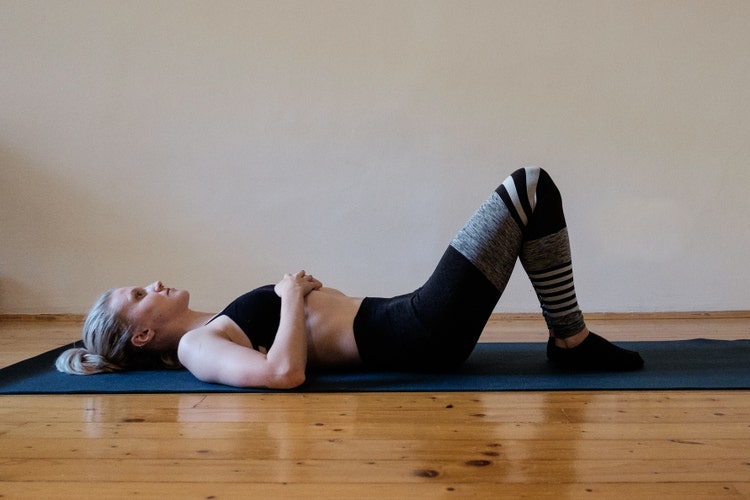
Supine hollowed abdomen
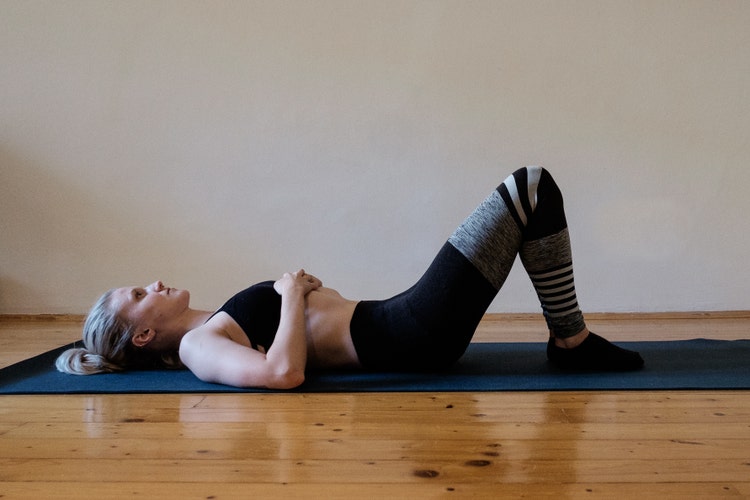
You can already see how this is a specific way to physically “massage” your digestive tract, and it’s also relatively easy to do. It may take a few tries to feel like you are doing the exercises correctly, but you’ll get comfortable with these pretty quickly.
Now to stimulate all areas, you’ll work on abdominal hollowing in a variety of positions. Start with lying on your back with your feet up as pictured above, then sitting and then quadruped (on hands and knees). You’ll then do them in rotated positions, either rolling your legs to the side or twisting your upper body.
Make sure to start slowly to prevent dizziness from all the breath work. Begin by breathing out and holding the exhale for just one to two seconds. Then rest a few seconds before the next repetition. Five repetitions in each position is great!
Let’s start with lying on your back and letting your knees fall to the side. Do your repetitions on one side, then switch over to the other.
Supine rotated
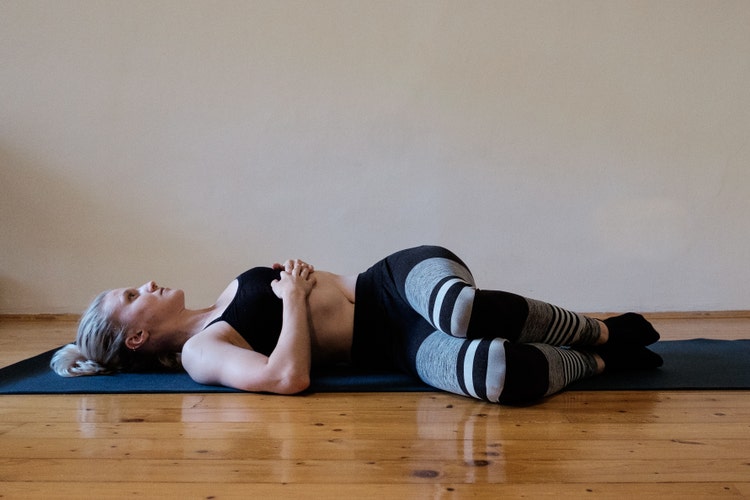
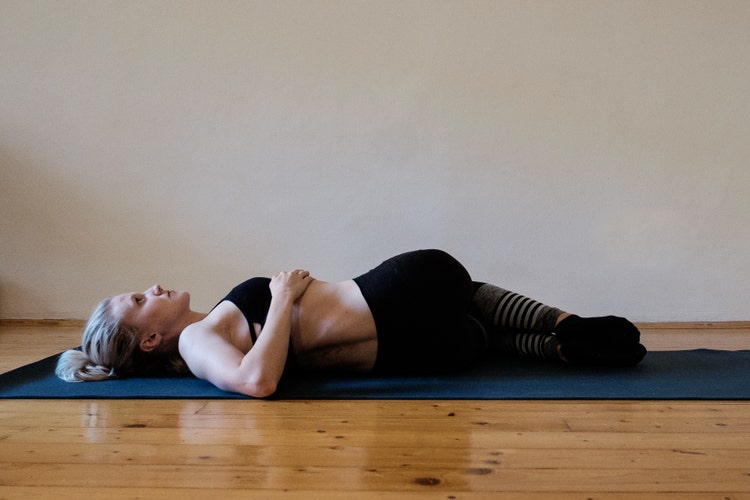
Next is sitting up, either in a chair/couch or sitting on your knees as pictured here. Do five repetitions sitting straight and then five rotated to one direction and five in the other.
Seated neutral
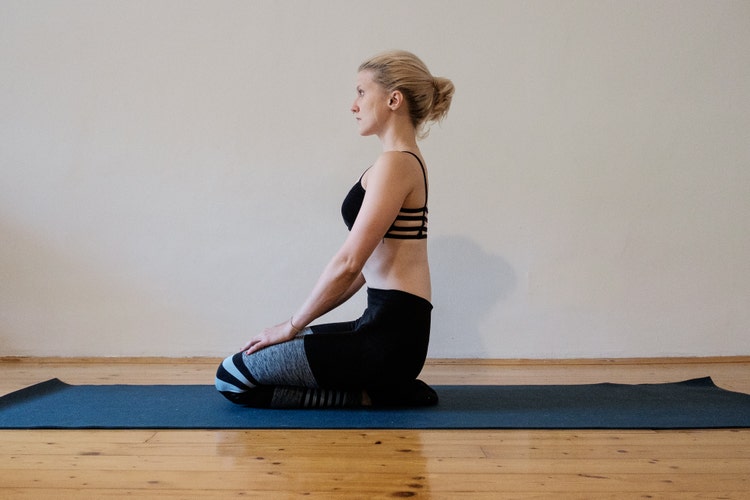
Seated rotated
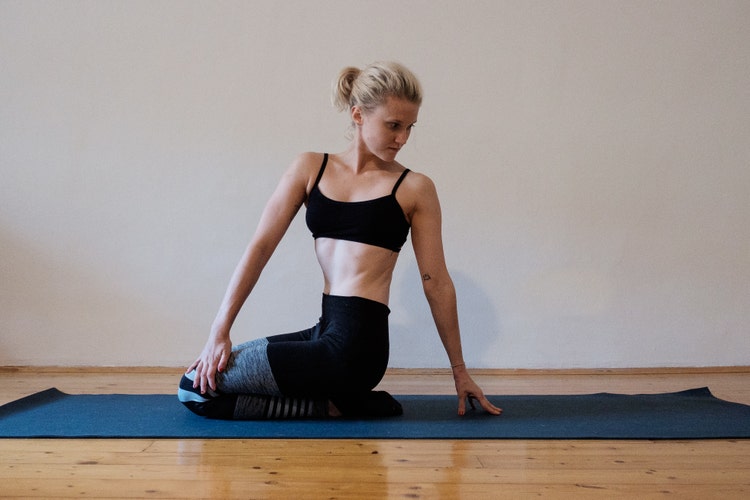
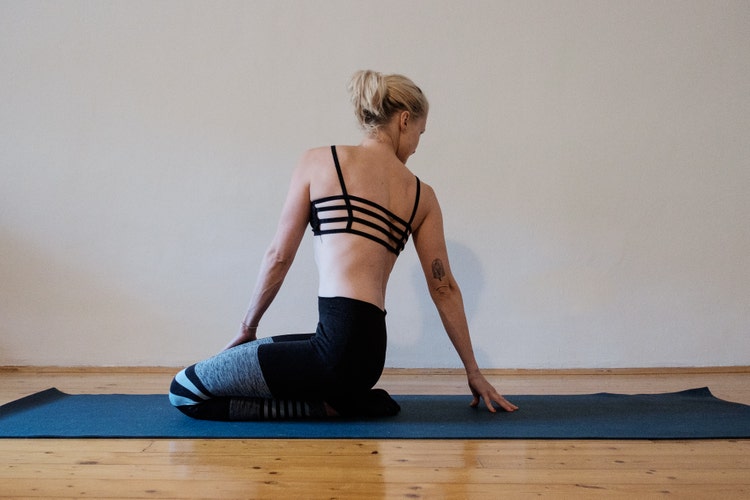
To end this series, go on your hands and knees. Make sure you are balanced with equal weight throughout your limbs, and keep your back flat. Begin with hollowing in “neutral,” then bring your knees over to one side and keep your shoulders facing square to the ground so that you are “twisting” your abdomen. And then repeat on the other side.
Quadruped neutral
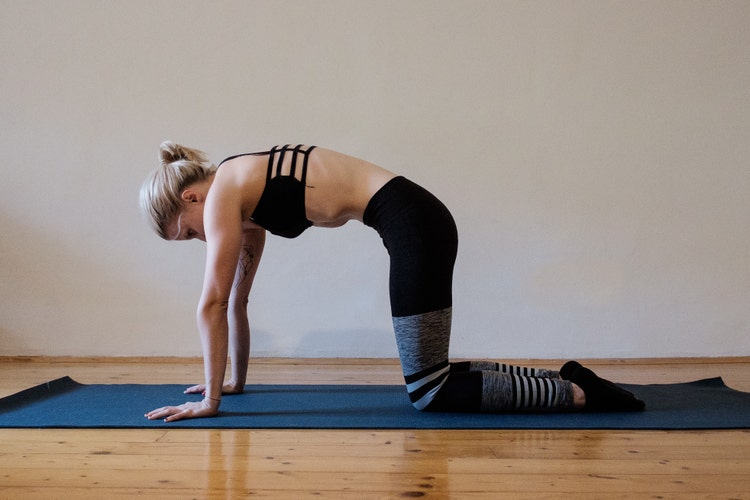
Quadruped rotated
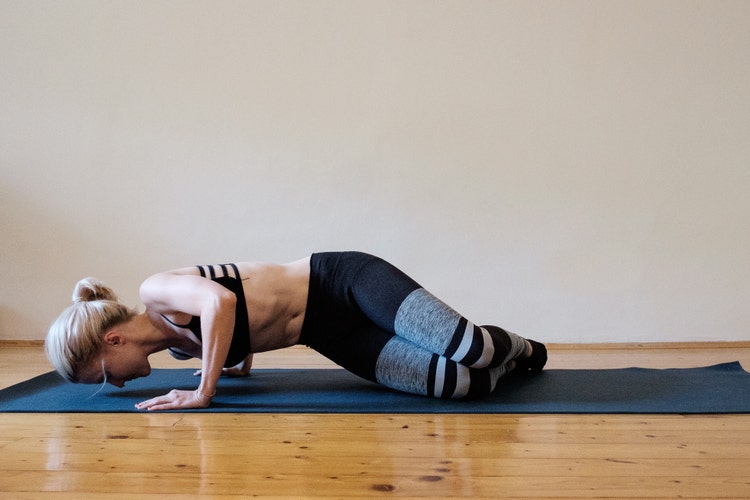
Quadruped rotated
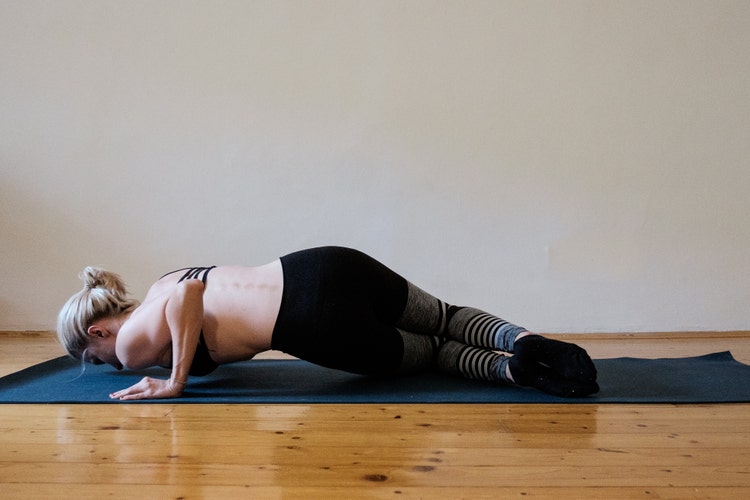
Remember that it can take lots of trial and error to figure out how best to address your digestive system concerns, but the above movements can be very helpful along with the guidance of your health-care provider. A properly functioning digestive system is just as important for your health and fitness as your muscles and heart and deserves just as much attention!
Photo credit: fizkes, Thinkstock; Courtesy of GMB Fitness